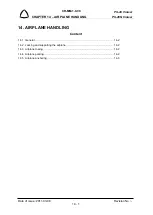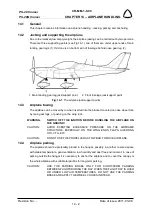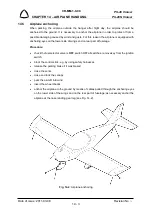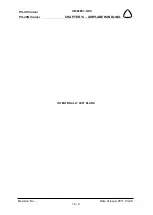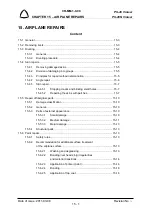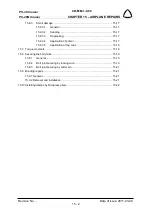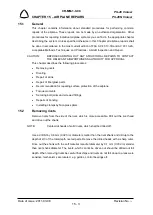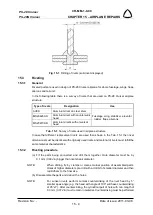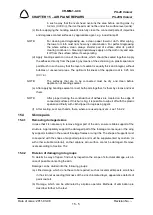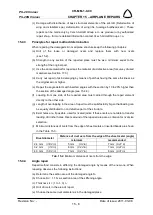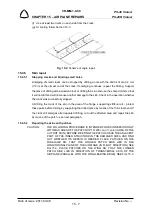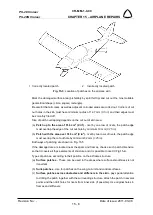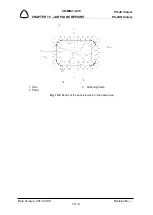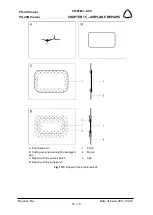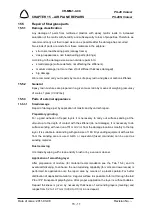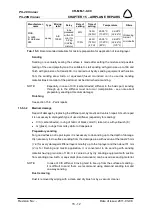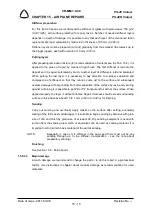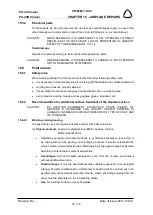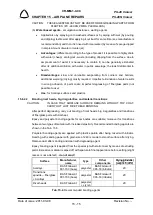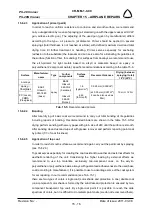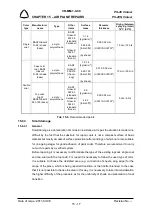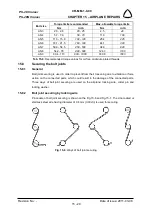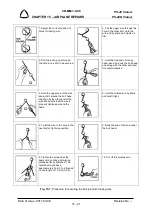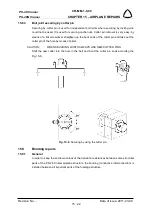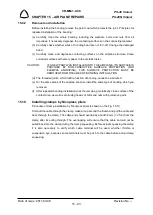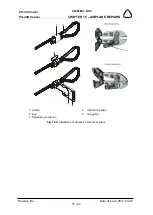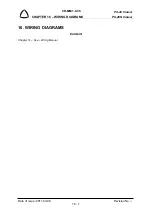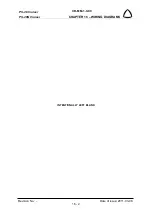
CR-MM-1-0-00
PS-28 Cruiser
PS-28N Cruiser
CHAPTER 15 – AIRPLANE REPAIRS
Date of issue: 2011-03-08
Revision No.: -
15 - 11
15.5
Repair of fiberglass parts
15.5.1
Damage classification
Any damage of parts from reinforced plastics with epoxy matrix leads to increased
saturation of the matrix with humidity and subsequently to loss of properties. Therefore we
recommend carry out their repair as soon as possible after the damage has occurred.
Two kinds of parts are made from these materials in the airplane:
•
structural, load-bearing parts (canopy frame)
•
design appearance, non load-bearing parts (fairings)
According to the damage size we can divide repairs into:
•
small damage (surface defects, not affecting the stiffeners)
•
medium damage (not more than 2/3 of stiffener thickness damaged)
•
big damage
We recommend carry out repairs by means of epoxy resin and glass or carbon stiffeners.
15.5.2
General
Epoxy resin mixtures are prepared in a given mass ratio by means of weighing (accuracy
of scales 1 gram (
0.002 lbs
)).
15.5.3
Parts of external appearance
15.5.3.1
Small damage
Repair of damage just by application of mastic and by varnish repair.
Preparatory grinding
For a good adhesion of repair layers it is necessary to carry out surface sanding at the
utmost up to the depth of contact with the stiffener (do not damage). It is necessary to do
surface sanding with overrun of 51 mm (
2 in
) from the damage location smoothly to the top
layer. It is suitable to do sanding with grain size of 160. Dry sanding equipment with suction
from the sanding area is used. Al
2
O
3
or equivalent (fused corundum) can be used as
sanding material.
Dust removing
It is made by wiping with clean and dry brush or by a vacuum cleaner.
Application of smoothing layer
After preparation of mixture (for material recommendation see the Tab. 15-4) and its
eventual thickening, to enhance the non curtaining capability (for vertical or lower areas) is
performed its application onto the repair area by means of a plastic spatula. For better
distribution of deposited material on irregular surface it is possible to form it through the laid
PE or PP transparent polyethylene. After proper application the layer is without bubbles.
Deposit thickness is given by necessary thickness of surrounding layers (leveling) and
ranges from 0.2 to 12.7 mm (
0.008 to 0.5 in
) in one deposit.

